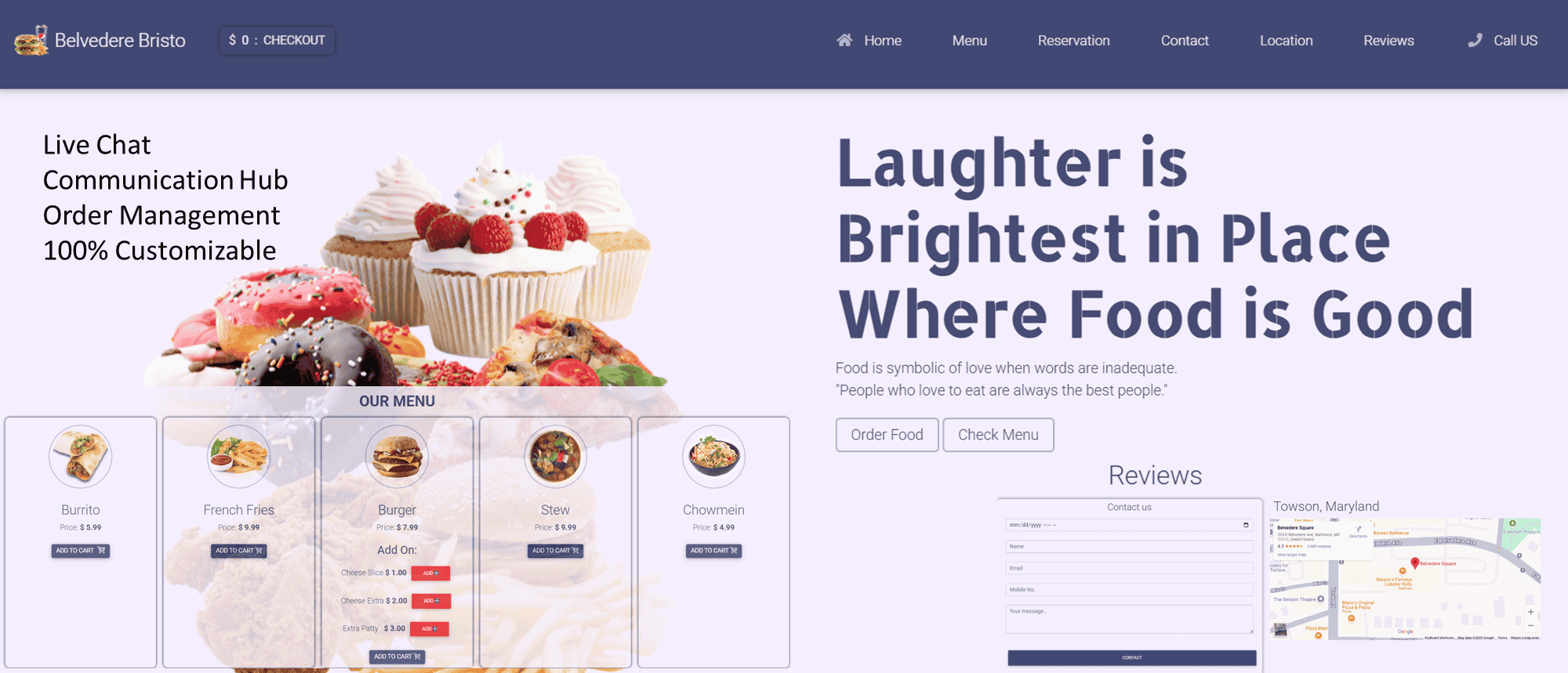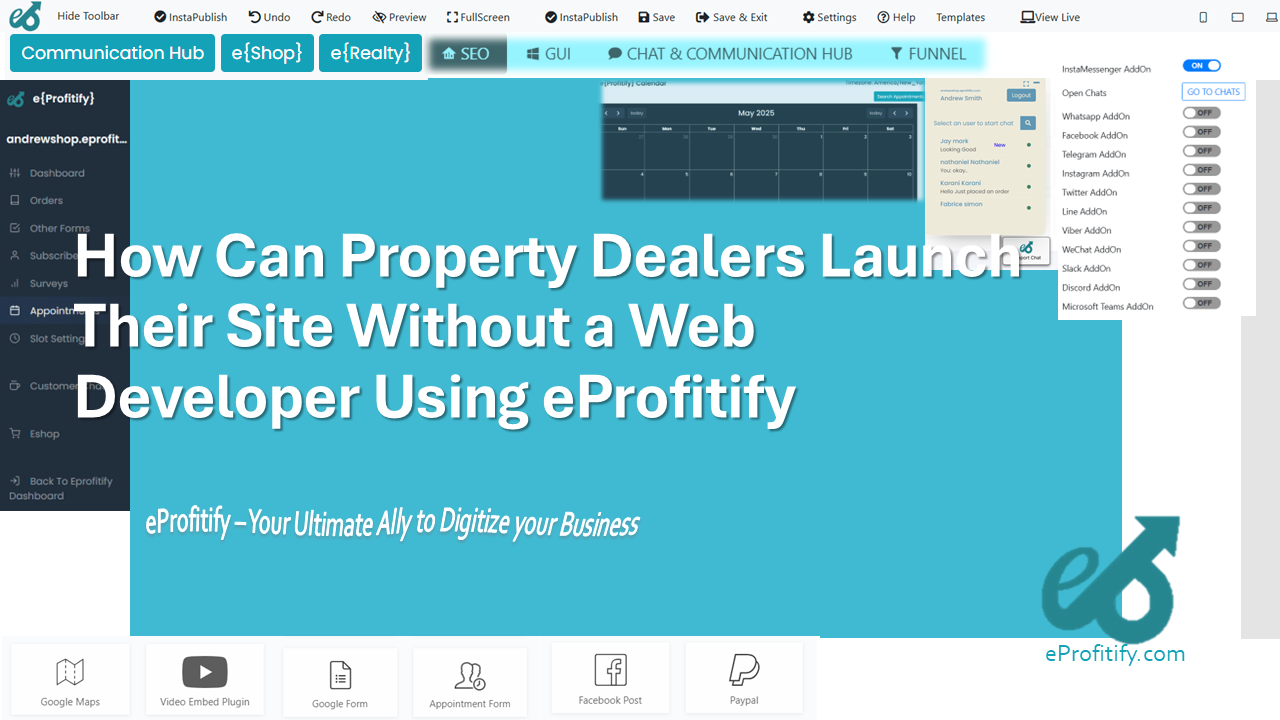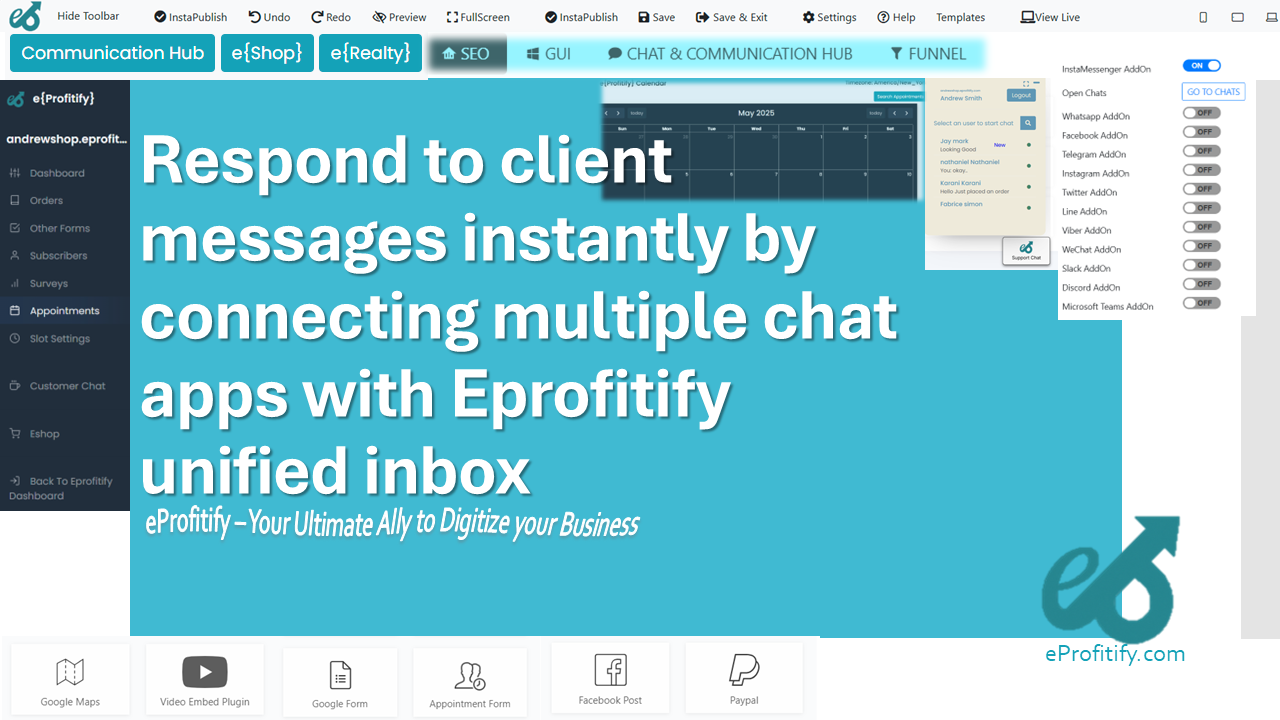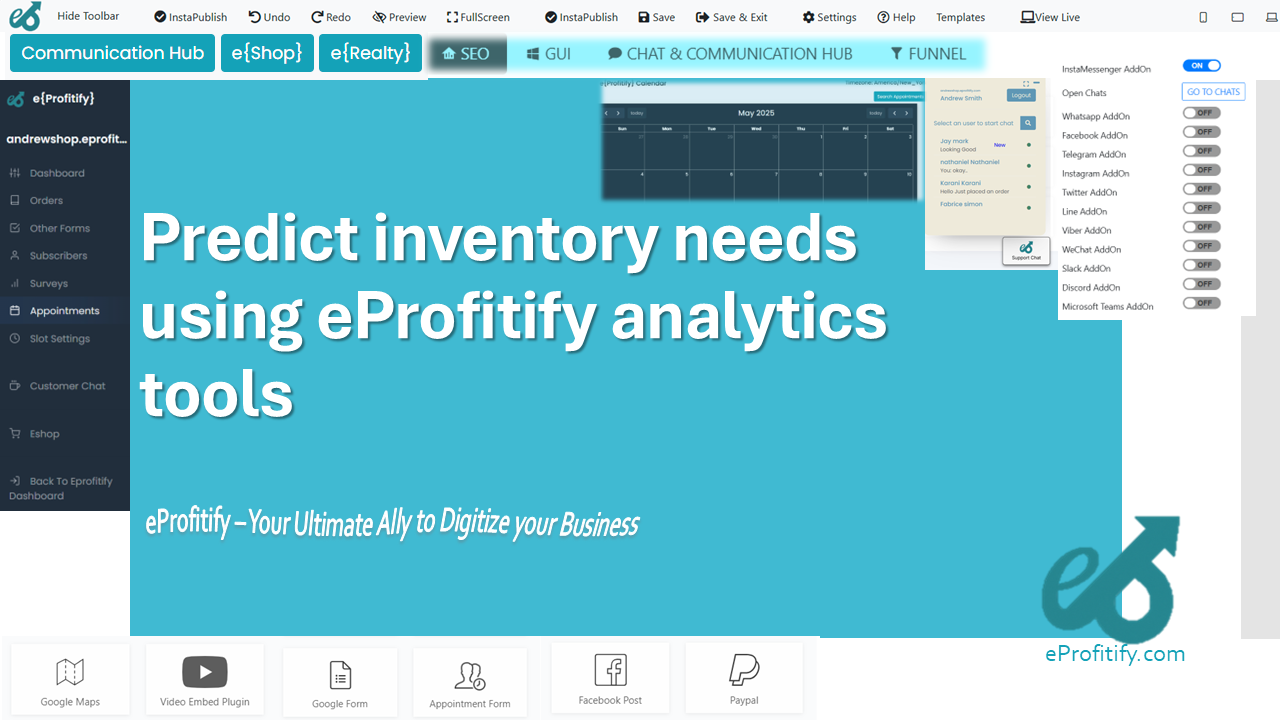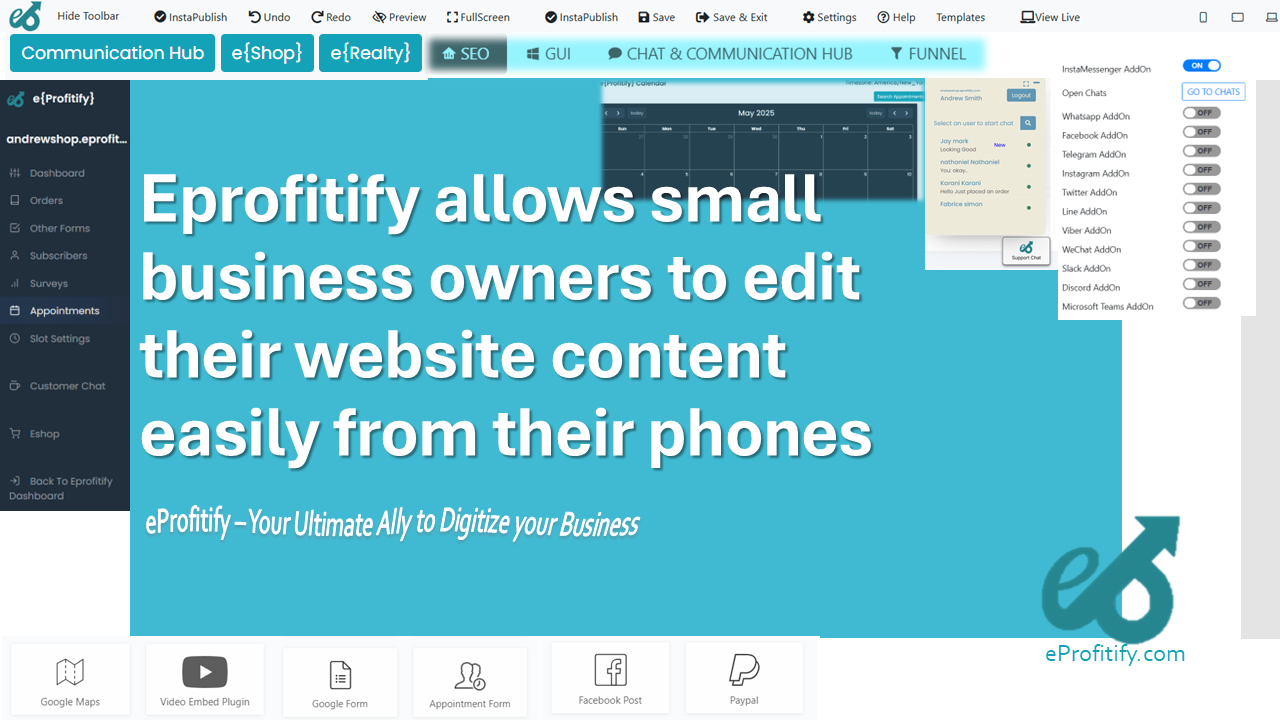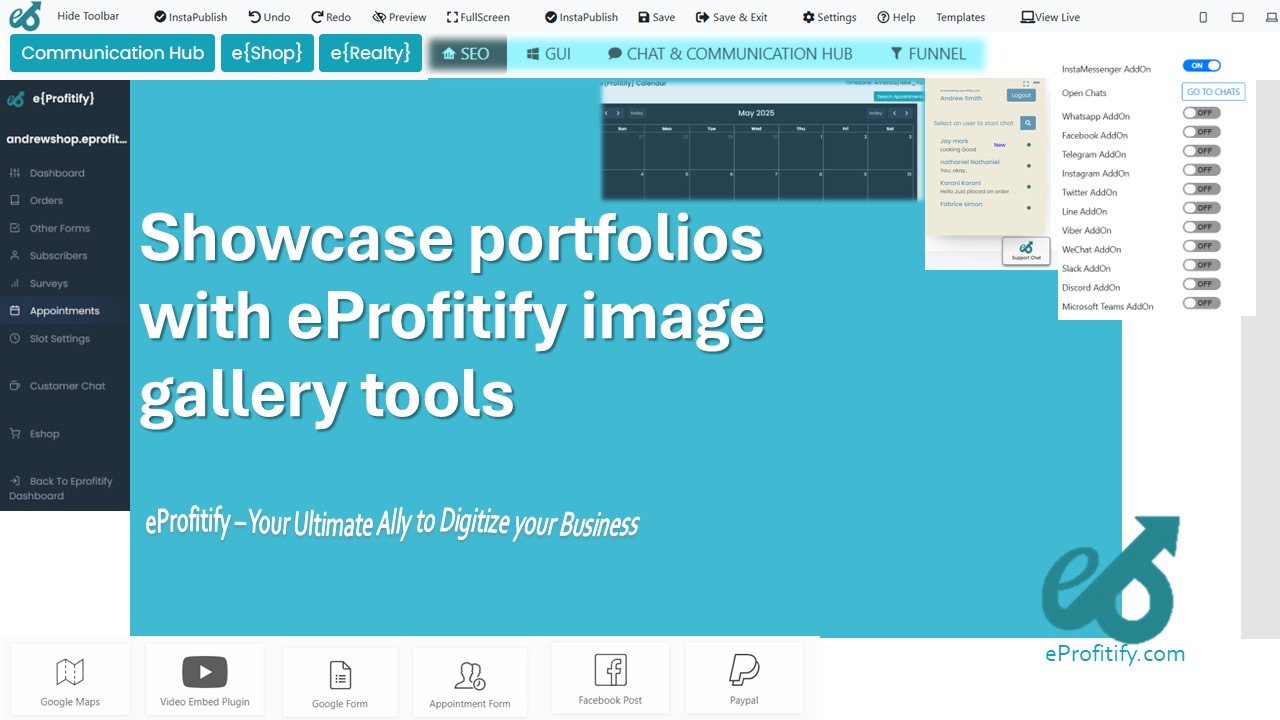How to Conduct Keyword Research Step by Step
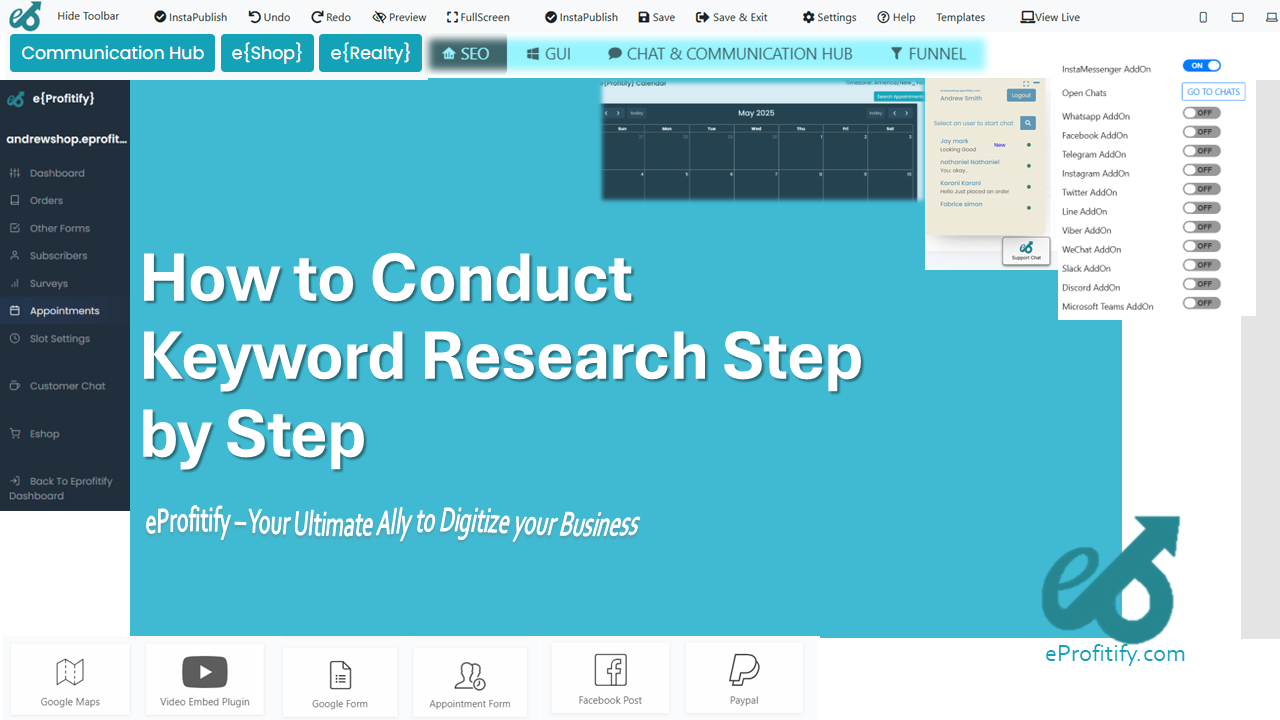
Schedule a LIVE Zoom call with an eProfitify Expert.
How to Conduct Keyword Research Step by Step
Keyword research is the foundation of any successful SEO strategy. It helps businesses understand what their target audience is searching for, identify opportunities, and create content that drives traffic. Below is a step-by-step guide to effective keyword research, supported by relevant statistics, and insights into how eprofitify—a leading website publishing and management tool—can enhance the process.
1. Define Your Goals
Start by outlining clear objectives. Are you aiming to boost organic traffic, increase sales, or improve brand visibility? Aligning keyword research with business goals ensures relevance.
- Statistic: 68% of online experiences begin with a search engine (BrightEdge).
eprofitify Integration: The platform’s analytics dashboard helps track keyword performance against predefined goals, providing real-time insights into traffic and conversions.
2. Brainstorm Seed Keywords
List broad terms related to your niche. For example, a bakery might use “vegan desserts” or “gluten-free cakes.” These seed keywords act as a starting point for deeper research.
- Statistic: 75% of users never scroll past the first page of search results (Advanced Web Ranking).
eprofitify Integration: Use its CRM to analyze customer inquiries and feedback, identifying common phrases that can be converted into seed keywords.
3. Use Keyword Research Tools
Leverage tools like Google Keyword Planner, Ahrefs, or SEMrush to expand your list. Focus on:
- Search Volume (SV): High-volume keywords indicate popularity.
- Keyword Difficulty (KD): Lower scores mean easier ranking chances.
- Intent: Prioritize terms aligning with user needs (informational, navigational, commercial).
- Statistic: Voice search queries account for 20% of all mobile searches (Google).
eprofitify Integration: The platform’s SEO module integrates with third-party tools to streamline keyword discovery and categorization.
4. Analyze Competitors
Identify top competitors and study their keyword strategies using tools like SpyFu or Moz. Look for gaps where you can outperform them.
- Statistic: 60% of organic clicks go to the top three search results (Ahrefs).
eprofitify Integration: Track competitor content performance via its built-in analytics and adjust your strategy using real-time data.
5. Prioritize Long-Tail Keywords
Long-tail keywords (e.g., “affordable wedding cakes in Miami”) are less competitive and attract targeted audiences.
- Statistic: Long-tail phrases drive 70% of web traffic (HubSpot).
eprofitify Integration: The ecommerce feature helps identify product-specific long-tail keywords by analyzing purchase patterns and customer behavior.
6. Group Keywords by Topic
Organize keywords into clusters (e.g., “vegan baking tips,” “dairy-free recipes”) to create topic-focused content. This improves SEO and user experience.
- Statistic: 90% of published content gets no organic traffic due to poor keyword alignment (Ahrefs).
eprofitify Integration: Use its content management system to map keywords to blog posts, product pages, or landing pages efficiently.
7. Monitor and Optimize
SEO is dynamic. Regularly update keywords based on trends, seasonality, and performance metrics.
- Statistic: Mobile devices generate 58% of global website traffic (Statista, 2023).
eprofitify Integration: The platform’s instant messaging and appointment management tools let teams collaborate on SEO updates, while automated reports highlight keyword trends.
Conclusion
Keyword research is an ongoing process that demands strategic planning and adaptability. Tools like eprofitify simplify this journey by offering a unified platform for keyword analysis, competitor tracking, CRM, and performance monitoring. With features like ecommerce integration, automated reporting, and real-time analytics, eprofitify empowers businesses to stay ahead in the competitive digital landscape. By combining data-driven keyword strategies with its holistic tools, brands can achieve sustained visibility and growth.

